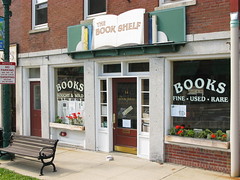Books
You know that you’re a denizen of the library when the librarian not only suggests a book, but also orders it from another library—before you ask.
I’m an eclectic reader, quick to glom onto something and then be off and running to learn more, to pirouette to another book. Last week I waded into The Secret Life of the National History Museum by Richard Fortey. I immediately liked him. How could I resist someone who wrote this description about the museum’s floor plan— “a warren of corridors…” I became an acolyte and I trailed him through the collections—stopping to jot down the names of women scientists or collectors.
“Mary Anning is credited with finding the first specimen of Ichthyosaurus acknowledged by the Geological Society in London. She also discovered the first nearly complete example of the Plesiosaurus; the first British Pterodactylus macronyx, a fossil flying reptile; the Squaloraja fossil fish, a transitional link between sharks and rays; and finally the Plesiosaurus macrocephalus.” Some say she was the greatest of the fossilists.
My son loved dinosaurs at five. At six he wanted to be a paleontologist. At seven he spread his collection of plastic dinosaurs throughout the house, behind a no longer used hobby horse, on the widow sill, in the bathtub,and on a blue mat that served as water for the Brachiosaurus. Dinosaur books filled a shelf. You can’t have a dinosaur from one era engaged in a battle with dinosaur not yet born and it was necessary to know the meat eaters from the vegetarians. We visited the Museum of Natural History where he picked up important bits of information.
“Do you know the heaviest dinosaur?” And then without waiting he’d say “Argentinosaurus.”
Mary Anning died of breast cancer March 9, 1847. “In 2005, a Mary Anning 'facsimile' was created at the Natural History Museum as one of a number of notable gallery characters to patrol its displays”—or perhaps to perambulate down the “…warren of corridors.”
Jumping from a repository of 70 million specimens in the fields of Botany, Entomology, Mineralogy, Paleontology and Zoology to libraries as repositories of books was a fluid move. I picked up The Library at Night by Alberto Manquel. Not only did Manquel start his peregrinations with the Library of Alexandria, but he extended an invitation to his readers to enter his own library and peruse a book. Because I am fascinated by the marginalia found in books I wrapped myself in his description of used books: “If the book is second hand, I leave all its markings intact, the spoor of previous readers…”
He reminds us of Seneca’s use of the Greek word euthymia as the “well-being of the soul” or “tranquility”. That is what he seeks in his private reading time. I have usually referred to those times when a book is a passage, a portal to the stories of the world as a conversation with the universe.
There is more—Manquel, in an essay, writes about a book he’s recently read by Ross Eckler: Making the Alphabet Dance: Recreational Wordplay.
Another direction to explore.
I’m an eclectic reader, quick to glom onto something and then be off and running to learn more, to pirouette to another book. Last week I waded into The Secret Life of the National History Museum by Richard Fortey. I immediately liked him. How could I resist someone who wrote this description about the museum’s floor plan— “a warren of corridors…” I became an acolyte and I trailed him through the collections—stopping to jot down the names of women scientists or collectors.
My son loved dinosaurs at five. At six he wanted to be a paleontologist. At seven he spread his collection of plastic dinosaurs throughout the house, behind a no longer used hobby horse, on the widow sill, in the bathtub,and on a blue mat that served as water for the Brachiosaurus. Dinosaur books filled a shelf. You can’t have a dinosaur from one era engaged in a battle with dinosaur not yet born and it was necessary to know the meat eaters from the vegetarians. We visited the Museum of Natural History where he picked up important bits of information.
“Do you know the heaviest dinosaur?” And then without waiting he’d say “Argentinosaurus.”
Mary Anning died of breast cancer March 9, 1847. “In 2005, a Mary Anning 'facsimile' was created at the Natural History Museum as one of a number of notable gallery characters to patrol its displays”—or perhaps to perambulate down the “…warren of corridors.”
Jumping from a repository of 70 million specimens in the fields of Botany, Entomology, Mineralogy, Paleontology and Zoology to libraries as repositories of books was a fluid move. I picked up The Library at Night by Alberto Manquel. Not only did Manquel start his peregrinations with the Library of Alexandria, but he extended an invitation to his readers to enter his own library and peruse a book. Because I am fascinated by the marginalia found in books I wrapped myself in his description of used books: “If the book is second hand, I leave all its markings intact, the spoor of previous readers…”
He reminds us of Seneca’s use of the Greek word euthymia as the “well-being of the soul” or “tranquility”. That is what he seeks in his private reading time. I have usually referred to those times when a book is a passage, a portal to the stories of the world as a conversation with the universe.
There is more—Manquel, in an essay, writes about a book he’s recently read by Ross Eckler: Making the Alphabet Dance: Recreational Wordplay.
Another direction to explore.



1 Comments:
Your photo and words inspire me. I hope to find the people and books you mention. This should help the dark days and winter blahs.
Thank you! -Jan
Post a Comment
<< Home